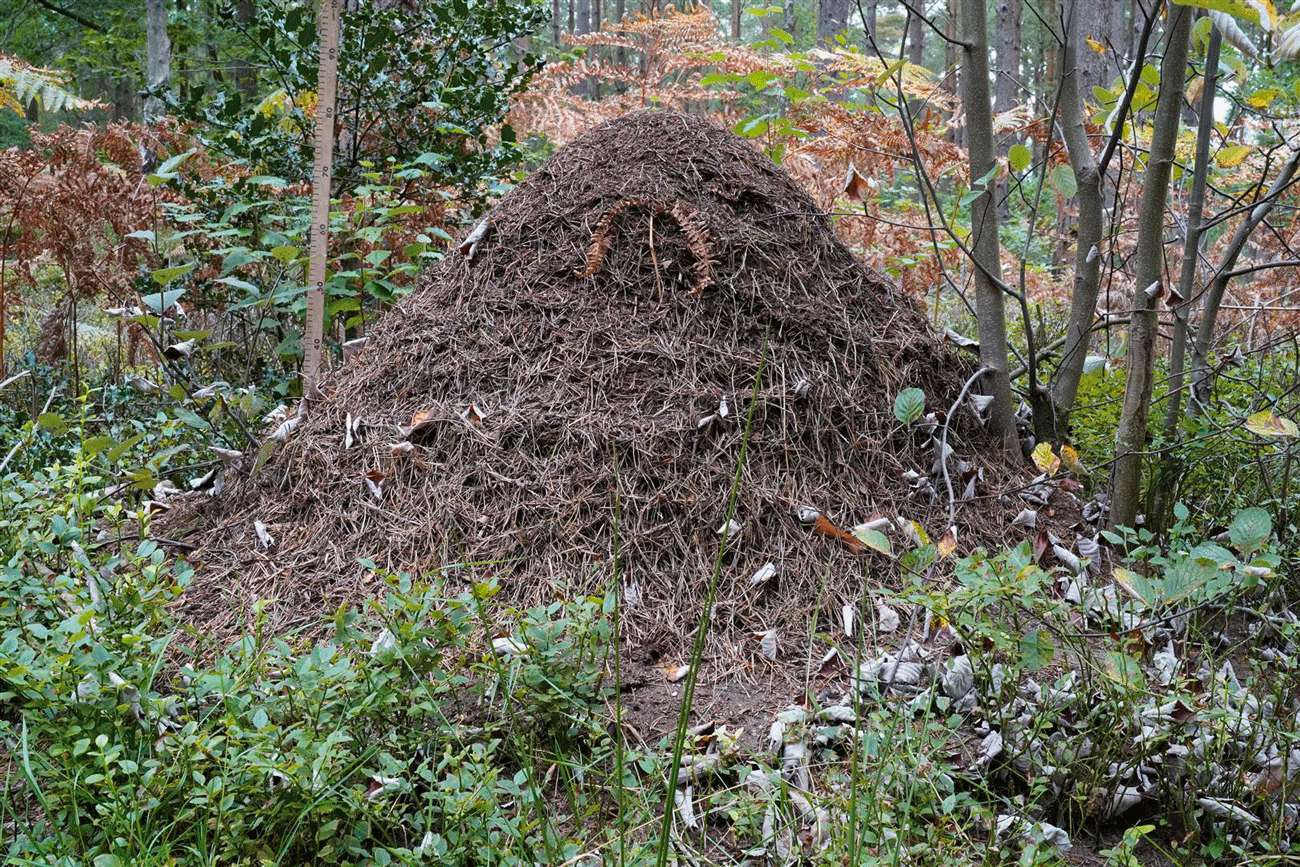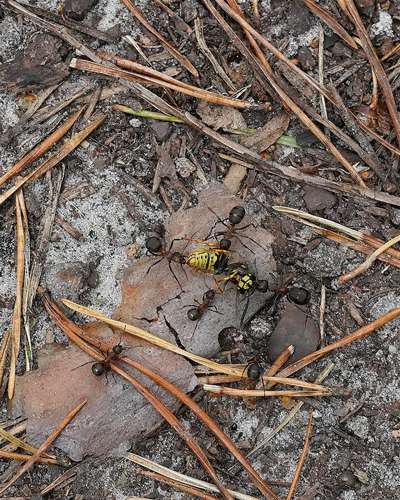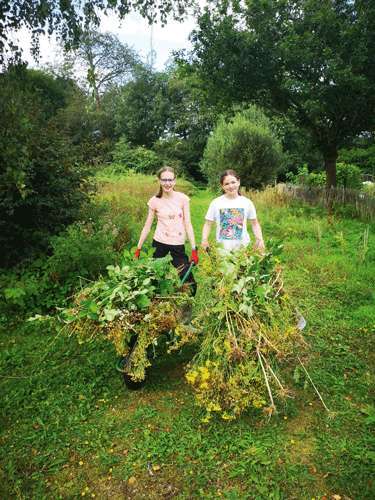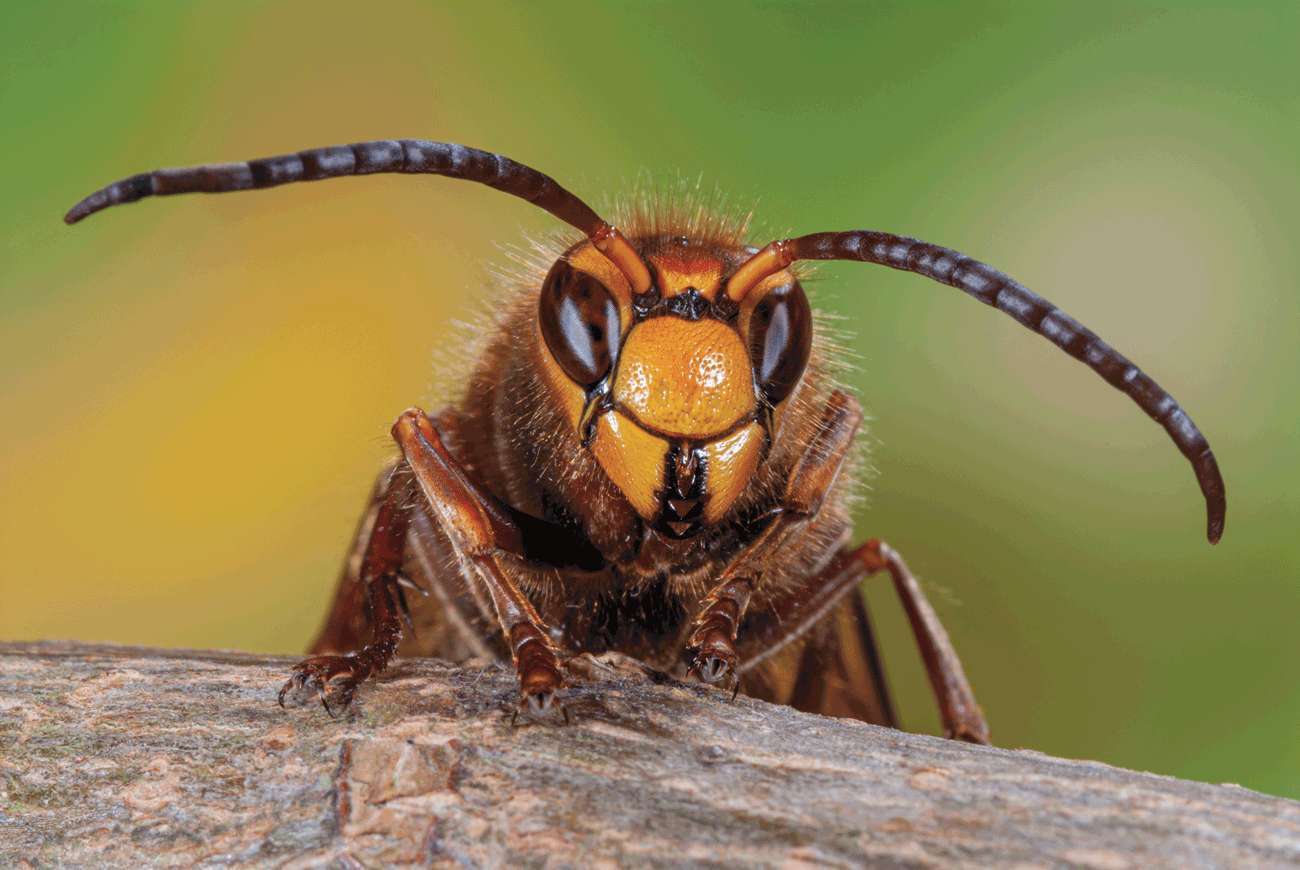
One of the two huge ants nests at Hurtwood
After writing about ants last month, a friend sent me the following by Ogden Nash which sums up this little creature perfectly:
The ant has made himself illustrious
Through constant industry industrious
So what?
Would you be calm and placid
If you were full of formic acid!
A couple of neighbours took me up to The Hurtwood to see two of the largest ants’ nests I had seen since Africa; I calculated the large one was almost a meter high. It was a hot day and the ants had made ventilation holes in their hill and were swarming in such numbers it looked as if the hill was seething. One file was going up a tall pine tree after the resin, whilst another was coming down, and the ground around was a moving mass of ants. We saw two ants carrying a sorry looking wasp between them. Lunch, possibly.
As you no doubt have noticed the Edwardian house Penwerris, on the Horsham Road was demolished and is being redeveloped as retirement flats, and rather surprisingly renamed Cranleigh Coves. The other day as I walked past I saw some tree men trimming a large tree and there was the most delicious smell in the air. That evening I returned and the wonderful smell was still there. It was coming from the shredded bark of a large Thuja plicata. This tree is not a native and was brought over here in the mid nineteenth century when anyone who was anyone planted exotic trees in their parks and gardens.
The perfume from the bark has been variously described as smelling of sweet eucalyptus, pineapple, citrus fruit or rosa rugosas – due to thujone, an essential oil is used in perfumery. Interesting that the same smell is interpreted so differently – we can’t assume that we all see, smell or hear exactly alike.
Ants are always at work and foraging for food
Thuja occidentalis came originally from the West Coast of the USA and has been here much longer. One book suggests that we should consider it now ‘naturalised’. I have yet to establish quite who decides on this and certainly some purists would argue. It is in the nature of purists to argue.
This thuja is also called Arborvitae or Tree of Life. One story explaining how this tree got that name dates back to 1535-1536 when the French explorer Jacques Cartier was leading an expedition in Canada and his men were dying of scurvy – he had lost 25 per cent to the disease, and the rest were not in good shape. He fortunately came across some Native Americans who told him that a decoction of this tree was a potent remedy against scurvy – the first recorded efficacious remedy for this disease.
When Gordon Harvey gave the area known as Beryl Harvey Fields to Cranleigh Parish Council in 1970 as a memorial to his wife, he specified it was to be an open space or allotments for the benefit of the villagers. We feel he would be happy with the way his gift is appreciated and enjoyed. During the lockdowns it was a calm, safe place to walk, sit or work on an allotment.
Most of the work on the conservation fields is done by volunteers and it is good that we have two young volunteers; Eleanor Reed and Jess Jones working for their Bronze Duke of Edinburgh Award on the site. The photo shows them clearing ragwort. Gordon Harvey would surely have approved.
Ragwort is one of those controversial plants which on the one hand is good for caterpillars and insects, whilst on the other it can be lethal to horses if they eat hay contaminated by ragwort flowers and seeds. It can also cause unpleasant reactions if not handled with gloves. This has been a good year for ragwort – but a lot of work for us. Thank you Jess and Eleanor – and all the other volunteers, who have also battled with blackthorn and brambles this summer.
Beryl Harvey Fields is Cranleigh’s nature conservation site. We need volunteers. For further information: visit our conservation site in Cranleigh – or better, volunteer. Contact Philip Townsend at: for details.
Find out more about the Beryl Harvey Fields HERE.
Photos by Mark Matthews and Nick Reed













